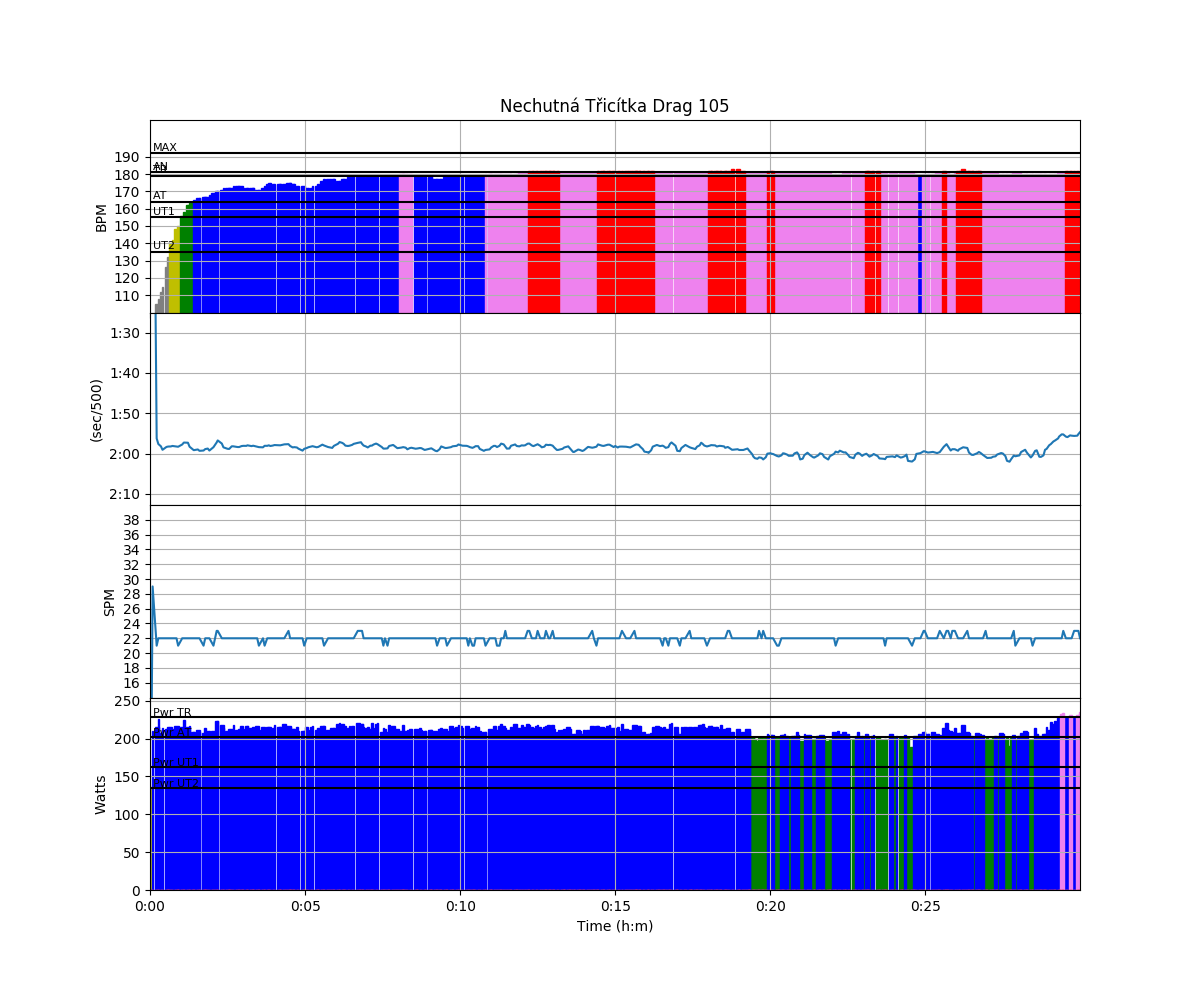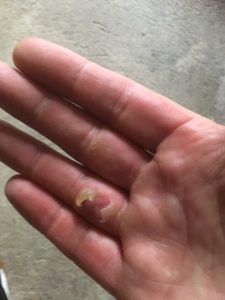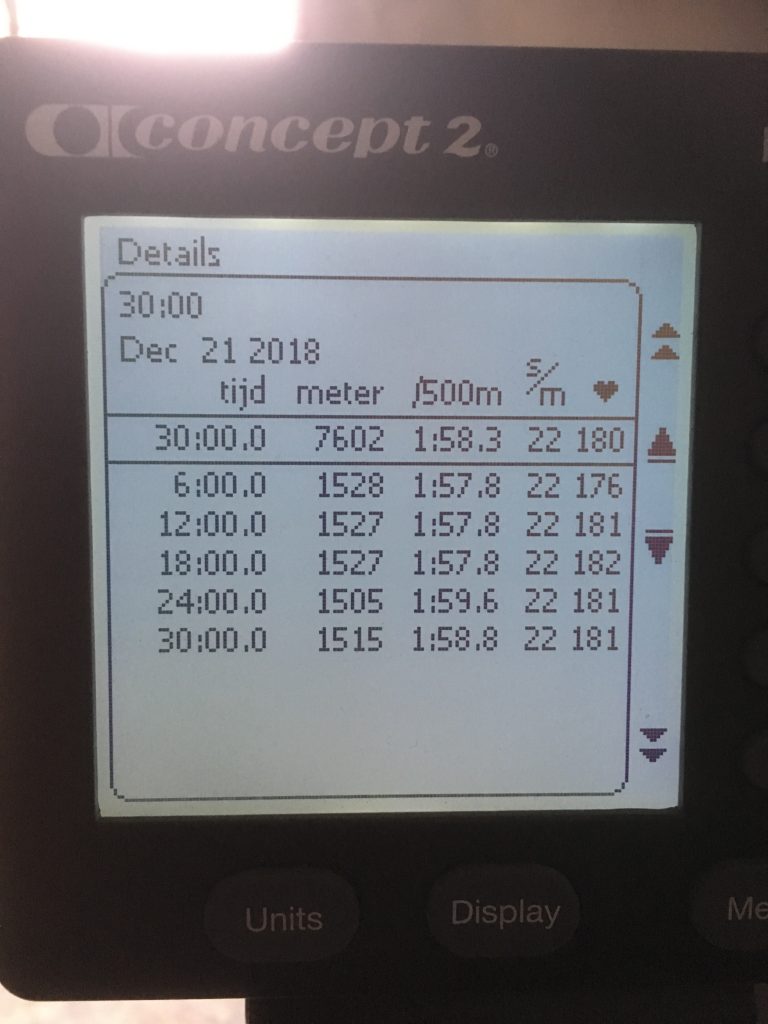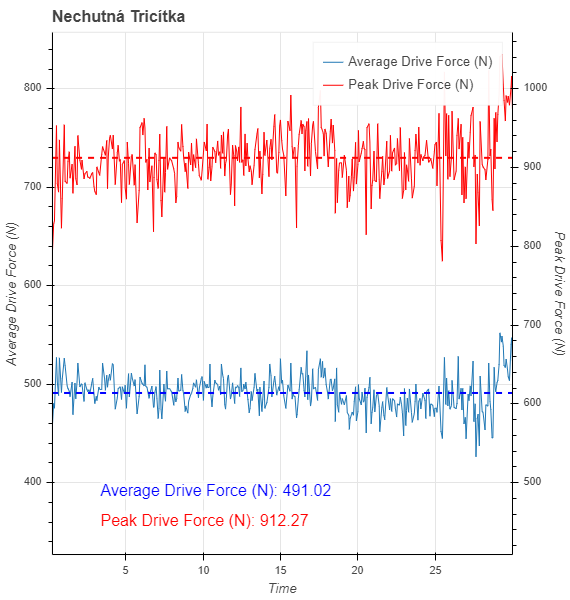Tuesday
A nice swimming session. Since I added swimming to my winter cross-training about a year ago, I’ve never looked back. One could of course question whether it is an effective way to cross-train but here are my observations:
- It’s an easy session, in the sense of the 80%/20% polarized training philosophy. My breast stroke speed puts me roughly in lane 2 or 3 out of the 4 lanes available for non-affiliated swimmers in our Olympic size pool, and I am happy there. I feel no urge to go harder and try to out-swim the faster swimmers. My heart rate is typically between 120 and 130, which even if corrected by about 10 beats to compensate for the water’s cooling factor, ends up on the UT2 low, light end of the spectrum. But haven’t studies shown that it is good to spend a significant amount of training time there?
- It’s a zero impact activity and it’s good for my back. I really enjoy a swimming session the day after a high intensity rowing session. The static erg is hard on the back.
- It’s very easy for me to weave this session into my daily routine. The pool is a five minute drive and it’s between my house and the office, so I really don’t lose any time there. Getting ready for a swim session doesn’t much longer than the time to get undressed, put on swimming trunks and goggles and take a shower. The positive habit-building potential of an exercise mode is, I think, very important. I am now at the level where I really don’t have to convince myself to go swimming. It’s part of my morning routine and I just end up in that pool without thinking about it.
- Time goes fast. I swim about 2km per session, which is 20 full laps. I occupy my mind with remembering which lap I am in, enjoying looking at the water surface, and sometimes doing some mental math based on the clock. This last thing is something only number geeks appreciate, but at the turning point I take a quick look at the clock. I see, for example “07:34:49” and then I spend a quarter of a lap multiplying 34 and 49 in my head (this is an easy example and the answer is 1666). Twenty laps is a very good number. You feel that you are making progress, and each lap is a nice bit of work. Doing 40 laps in a small pool is not good. Translated to erging, I guess it would feel easier to me to do a 20x4min/10sec steady state than a 4x20min/1min steady state. I should try that one day.
- It’s good training for shoulders and arms. On the erg, these are underused compared to OTW rowing.
So, enough reasons to be happy with the swimming sessions.
Wednesday
This was an interesting session by our coach. I am not sure what to think about it. The instructions were:
Warming up 3000m.
19 minutes as 4min/3min/2min/1min/2min/3min/4min at 20/22/24/26/24/22/20 spm
4 minutes rest
6 minutes as 1min/1min/1min/1min/1min/1min at 20/22/24/26/24/22 spm
The additional instruction was to row as many meters as possible in the pieces.

I am not sure I really maximized the meters. Perhaps I should have pulled harder in this session. The 6 minute interval was much less hard than I expected. This workout also scored 20 points lower in terms of TSS than I had anticipated.
This was the first full session with the new handle (and new shock cord), and I did get some blisters. The new Concept2 handle is a bit rougher than I am used to, and apparently my fingers are moving more. Not sure I liked it … It’s interesting how I don’t have this problem with identical handles at the rowing club ergs. Perhaps it’s just the newness factor.
Friday
The dreaded 30 minutes at 22 spm. First, I did a nice long (15 minutes) warming up. Then I set out to row the 30 minutes. I had taken a conservative target of 1:58, allowing myself to row 1:59 split for the first 12 minutes, then accelerate.
The plan failed. I didn’t stick to 1:59 but pulled 1:58 and 1:57 in the first 10 minutes “because it feels good” and I expected naively to be ahead of the plan. Then, when it was time to stick to 1:58 or faster, suddenly that became harder, and when it was time to speed up (at 10 minutes to go), I actually slowed down and had difficulty keeping my splits under 2:00. I did manage to speed up to 1:55 – 1:54 eventually, but only in the final minute.
Workout Summary - media/20181221-1136030o.csv
--|Total|-Total-|--Avg--|-Avg-|Avg-|-Avg-|-Max-|-Avg
--|Dist-|-Time--|-Pace--|-Pwr-|SPM-|-HR--|-HR--|-DPS
--|07600|29:58.0|01:58.3|211.2|22.0|177.3|183.0|11.5
W-|07602|29:59.0|01:58.3|211.2|22.0|177.3|183.0|11.5
R-|00000|00:00.0|00:00.0|000.0|00.0|000.0|183.0|00.0
Workout Details
#-|SDist|-Split-|-SPace-|-Pwr-|SPM-|AvgHR|MaxHR|DPS-
00|01514|05:55.7|01:57.4|213.7|21.9|164.1|177.0|11.7
01|01522|05:58.7|01:57.9|214.1|22.0|178.8|181.0|11.6
02|01539|06:02.9|01:57.9|214.0|22.1|181.5|182.0|11.5
03|01500|05:58.8|01:59.6|205.1|22.0|181.3|183.0|11.4
04|01527|06:03.0|01:58.8|209.0|22.1|180.8|183.0|11.4

My handle issues continued. Actually, a blister burst around 10 minutes into the row. Here’s how my hand looked immediately after the 30 minute (I’ll make that a medium sized picture):
 I finished with a very slow 15 minute cooling down.
I finished with a very slow 15 minute cooling down.
I made this row part of an on-line indoor rowing challenge, where you can sign up on rowsandall.com and compare the results. Here is the comparison with Greg Smith, who struggled through this workout as well:
So even though he HD’ed twice, he still was faster than I. It’s not fair! At least I beat him in the heart rate comparison.

The fixed stroke rate sessions are also interesting from a rowing data perspective. It enables you to look at how work per stroke is affected by fatigue. Normally, as we get tired, we rate up to compensate for that, but this is not possible in a fixed rate row.
So when I dropped my pace, I got a bit shorter on the drive length and work per stroke droppped, but what surprised me was the change in the Average/Peak force ratio. Here is a look at average and peak force:

So peak force remains pretty constant, but the average force drops. Two things could cause this:
- Less strong catch position
- Less strong finish position
Both are about keeping form and sitting strong. I don’t have video evidence but I do believe this is what I need to work on, keeping a strong position even when fatigue sets in. I could have gained a few meters with that.
Saturday
Two sessions in series. First, a nice 40 minute run. I ran with Dominik, my son who is 14 year. It was great fun, because he is now a faster runner than I, so we were both enjoying that. He liked to be faster and be asked to slow down a bit, and I liked how he enjoyed being faster than his father.
Unfortunately, the GPS recording of this run was crazy. I am using Polar Beat on the Android phone and it takes ages to lock into a GPS position. When I start running before it locks the position, it never catches up. According to Polar Beat, we ran 49 kilometers in 45 minutes. Unbelievable!
The funny thing is that the same phone has no trouble locking the GPS position when I use any other app, be it Google Maps or their local equivalents or a route planning app like Waze. I should make a note to stop using Polar Beat. It’s no use.
Average heart rate 149 beats per minute (mostly between 145 and 160).
After the run, I did a 30 minute “CORE exercises” session with my wife Romana. Given my remarks above about erg posture, paying attention to core strength is not a nice-to-have but a real need. Romana’s core session is tough, but it’s a really good strength session for arms, shoulders, and especially core muscles.
5x1min PLANK / 30 sec
5×40 sec Side Plank / 20 sec
5x 40 sec Sit-Ups / 20 sec
5x 40 sec deep, slow squats / 20 sec
5x 40 sec Push-ups with legs on Pezzi ball
5x 40 sec/20 sec of something we call “Torch” and it really “torchures” your belly.
Follow me in social media
Like this:
Like Loading...
Dec 23 2018
Endurance / Meso III / Week 51
Tuesday
A nice swimming session. Since I added swimming to my winter cross-training about a year ago, I’ve never looked back. One could of course question whether it is an effective way to cross-train but here are my observations:
So, enough reasons to be happy with the swimming sessions.
Wednesday
This was an interesting session by our coach. I am not sure what to think about it. The instructions were:
Warming up 3000m.
19 minutes as 4min/3min/2min/1min/2min/3min/4min at 20/22/24/26/24/22/20 spm
4 minutes rest
6 minutes as 1min/1min/1min/1min/1min/1min at 20/22/24/26/24/22 spm
The additional instruction was to row as many meters as possible in the pieces.
I am not sure I really maximized the meters. Perhaps I should have pulled harder in this session. The 6 minute interval was much less hard than I expected. This workout also scored 20 points lower in terms of TSS than I had anticipated.
This was the first full session with the new handle (and new shock cord), and I did get some blisters. The new Concept2 handle is a bit rougher than I am used to, and apparently my fingers are moving more. Not sure I liked it … It’s interesting how I don’t have this problem with identical handles at the rowing club ergs. Perhaps it’s just the newness factor.
Friday
The dreaded 30 minutes at 22 spm. First, I did a nice long (15 minutes) warming up. Then I set out to row the 30 minutes. I had taken a conservative target of 1:58, allowing myself to row 1:59 split for the first 12 minutes, then accelerate.
The plan failed. I didn’t stick to 1:59 but pulled 1:58 and 1:57 in the first 10 minutes “because it feels good” and I expected naively to be ahead of the plan. Then, when it was time to stick to 1:58 or faster, suddenly that became harder, and when it was time to speed up (at 10 minutes to go), I actually slowed down and had difficulty keeping my splits under 2:00. I did manage to speed up to 1:55 – 1:54 eventually, but only in the final minute.
Workout Summary - media/20181221-1136030o.csv
--|Total|-Total-|--Avg--|-Avg-|Avg-|-Avg-|-Max-|-Avg
--|Dist-|-Time--|-Pace--|-Pwr-|SPM-|-HR--|-HR--|-DPS
--|07600|29:58.0|01:58.3|211.2|22.0|177.3|183.0|11.5
W-|07602|29:59.0|01:58.3|211.2|22.0|177.3|183.0|11.5
R-|00000|00:00.0|00:00.0|000.0|00.0|000.0|183.0|00.0
Workout Details
#-|SDist|-Split-|-SPace-|-Pwr-|SPM-|AvgHR|MaxHR|DPS-
00|01514|05:55.7|01:57.4|213.7|21.9|164.1|177.0|11.7
01|01522|05:58.7|01:57.9|214.1|22.0|178.8|181.0|11.6
02|01539|06:02.9|01:57.9|214.0|22.1|181.5|182.0|11.5
03|01500|05:58.8|01:59.6|205.1|22.0|181.3|183.0|11.4
04|01527|06:03.0|01:58.8|209.0|22.1|180.8|183.0|11.4
My handle issues continued. Actually, a blister burst around 10 minutes into the row. Here’s how my hand looked immediately after the 30 minute (I’ll make that a medium sized picture):
I made this row part of an on-line indoor rowing challenge, where you can sign up on rowsandall.com and compare the results. Here is the comparison with Greg Smith, who struggled through this workout as well:
So even though he HD’ed twice, he still was faster than I. It’s not fair! At least I beat him in the heart rate comparison.
The fixed stroke rate sessions are also interesting from a rowing data perspective. It enables you to look at how work per stroke is affected by fatigue. Normally, as we get tired, we rate up to compensate for that, but this is not possible in a fixed rate row.
So when I dropped my pace, I got a bit shorter on the drive length and work per stroke droppped, but what surprised me was the change in the Average/Peak force ratio. Here is a look at average and peak force:
So peak force remains pretty constant, but the average force drops. Two things could cause this:
Both are about keeping form and sitting strong. I don’t have video evidence but I do believe this is what I need to work on, keeping a strong position even when fatigue sets in. I could have gained a few meters with that.
Saturday
Two sessions in series. First, a nice 40 minute run. I ran with Dominik, my son who is 14 year. It was great fun, because he is now a faster runner than I, so we were both enjoying that. He liked to be faster and be asked to slow down a bit, and I liked how he enjoyed being faster than his father.
Unfortunately, the GPS recording of this run was crazy. I am using Polar Beat on the Android phone and it takes ages to lock into a GPS position. When I start running before it locks the position, it never catches up. According to Polar Beat, we ran 49 kilometers in 45 minutes. Unbelievable!
The funny thing is that the same phone has no trouble locking the GPS position when I use any other app, be it Google Maps or their local equivalents or a route planning app like Waze. I should make a note to stop using Polar Beat. It’s no use.
Average heart rate 149 beats per minute (mostly between 145 and 160).
After the run, I did a 30 minute “CORE exercises” session with my wife Romana. Given my remarks above about erg posture, paying attention to core strength is not a nice-to-have but a real need. Romana’s core session is tough, but it’s a really good strength session for arms, shoulders, and especially core muscles.
5x1min PLANK / 30 sec
5×40 sec Side Plank / 20 sec
5x 40 sec Sit-Ups / 20 sec
5x 40 sec deep, slow squats / 20 sec
5x 40 sec Push-ups with legs on Pezzi ball
5x 40 sec/20 sec of something we call “Torch” and it really “torchures” your belly.
Follow me in social mediaShare this:
Like this:
By sanderroosendaal • Uncategorized • 0 • Tags: concept2, cross-training, erg, OTE, rowing, training